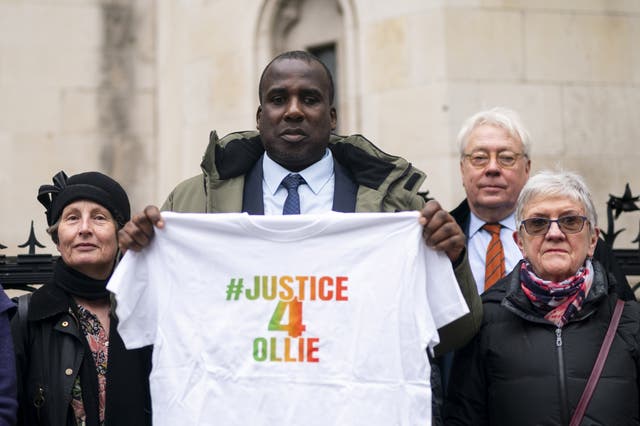
Police may have manipulated a man with learning difficulties into giving a false confession to a murder in the 1990s, the Court of Appeal has heard.
Oliver Campbell was jailed for life in 1991 for murdering shopkeeper Baldev Hoondle in Hackney, London the previous July.
The 53-year-old was released in 2002 and is now appealing against his conviction, which his barristers have said is “unsafe” and should be quashed.
A Court of Appeal hearing heard that Campbell, who suffered brain damage as a baby, was “badgered and bullied” by police into giving a false confession over his involvement.
Giving evidence in London on Thursday, forensic psychologist Professor Gisli Hannes Gudjonsson said that there was a “high risk” that Campbell’s mental disabilities meant he gave a false confession as a form of “acquiescence” during “relentless” questioning.
He said: “He was confronted with a situation. He was being questioned. It was not clear to him that the police thought he had done it, and he was claiming he had not done it, and basically, it came to a point that resistance was breaking down.
“He was giving the police what he thought they wanted, believing that he might then get out or they may stop interrogating him.
“The mindset is, there is relentless questioning, how can I stop them questioning me? How can I get them off my back?
“Eventually, people realise they are not going anywhere, they realise the only way out now is to say it was an accident or something like that.
“This is a high-risk situation. I can’t say whether this is a false confession or not, it is not for me to say.
“I am looking at the science, and the science tells me that there are several cumulative risk factors that increase the likelihood of this being a false confession.”
The Crown Prosecution Service is resisting the appeal, which was brought to the court by the Criminal Cases Review Commission.

Prof Gudjonsson carried out psychometric tests on Campbell in the 1990s and again in 2021, telling the court that science has since developed to provide a greater understanding of how and why suspects can give false confessions even if they are innocent.
This included a greater understanding of Campbell’s brain injury and how this affected his cognitive abilities, as well as his “naivety”.
Prof Gudjonsson said that Campbell scored “abnormally high” on tests for acquiescence, meaning a “tendency of the person to agree to something irrespective of content”.
This, he said, meant Campbell was more likely to give affirmative answers to questions posed by police when he was in doubt, “significantly” increasing the risk of him inadvertently making the “flawed” decision to confess to the crime.
Campbell was interviewed 14 times by police during the investigation, many of which took place without a solicitor or appropriate adult, something Prof Gudjonsson said was “seriously problematic”.
He said: “He was so vulnerable, he clearly needed an appropriate adult who was effective, and a solicitor who was cognisant to any pressure that was unfair.
“The techniques (of questioning) that were used carry a very high risk. They were dangerous.
“These kinds of manipulations do significantly increase the risk of a false confession.
“I am confident that the risks were high.”
Campbell was 21 when he was convicted of murder and conspiracy to rob following a trial at the Old Bailey.
A British Knights baseball cap purchased by Campbell in the days before the killing was found near the scene, but the hairs inside it did not belong to him.
Campbell’s co-defendant, Eric Samuels, was cleared of murder but jailed for five years after admitting robbery.
Campbell’s barrister, Michael Birnbaum KC, said on Wednesday that Samuels – who has since died – had told several people that Campbell was not the gunman, but this evidence was not presented to jurors at trial.
Mr Birnbaum also said that officers may have “deliberately lied” to Campbell to adduce confessions.
Lord Justice Holroyde, Mrs Justice Stacey and Mr Justice Bourne adjourned proceedings on Thursday afternoon, with the CPS to make its submissions at a future hearing.
Lord Justice Holroyde apologised to Campbell and the family of Mr Hoondle, but said the “important and difficult” case “must be properly addressed”.

Enjoy the convenience of having The Sunday Post delivered as a digital ePaper straight to your smartphone, tablet or computer.
Subscribe for only £5.49 a month and enjoy all the benefits of the printed paper as a digital replica.
Subscribe